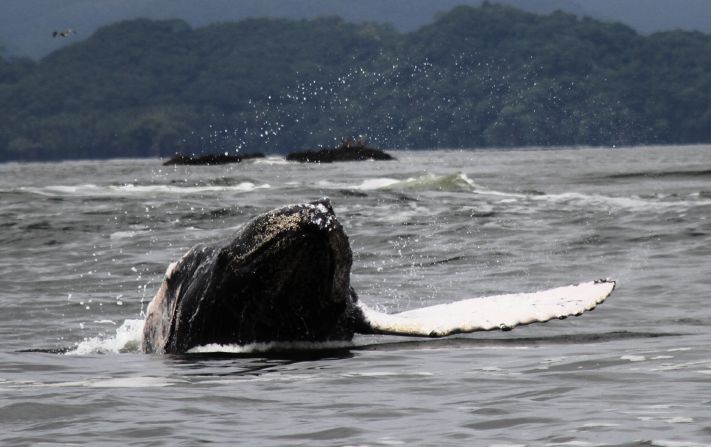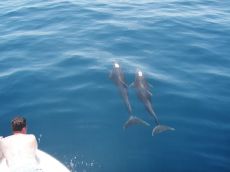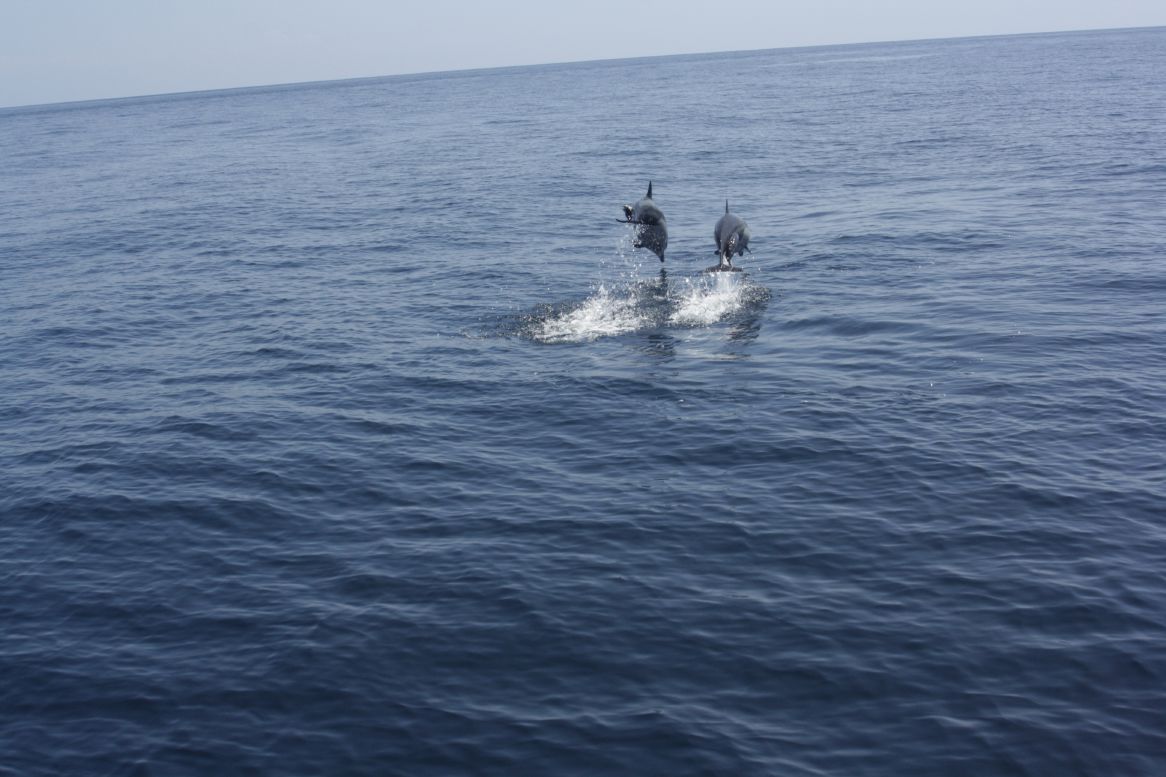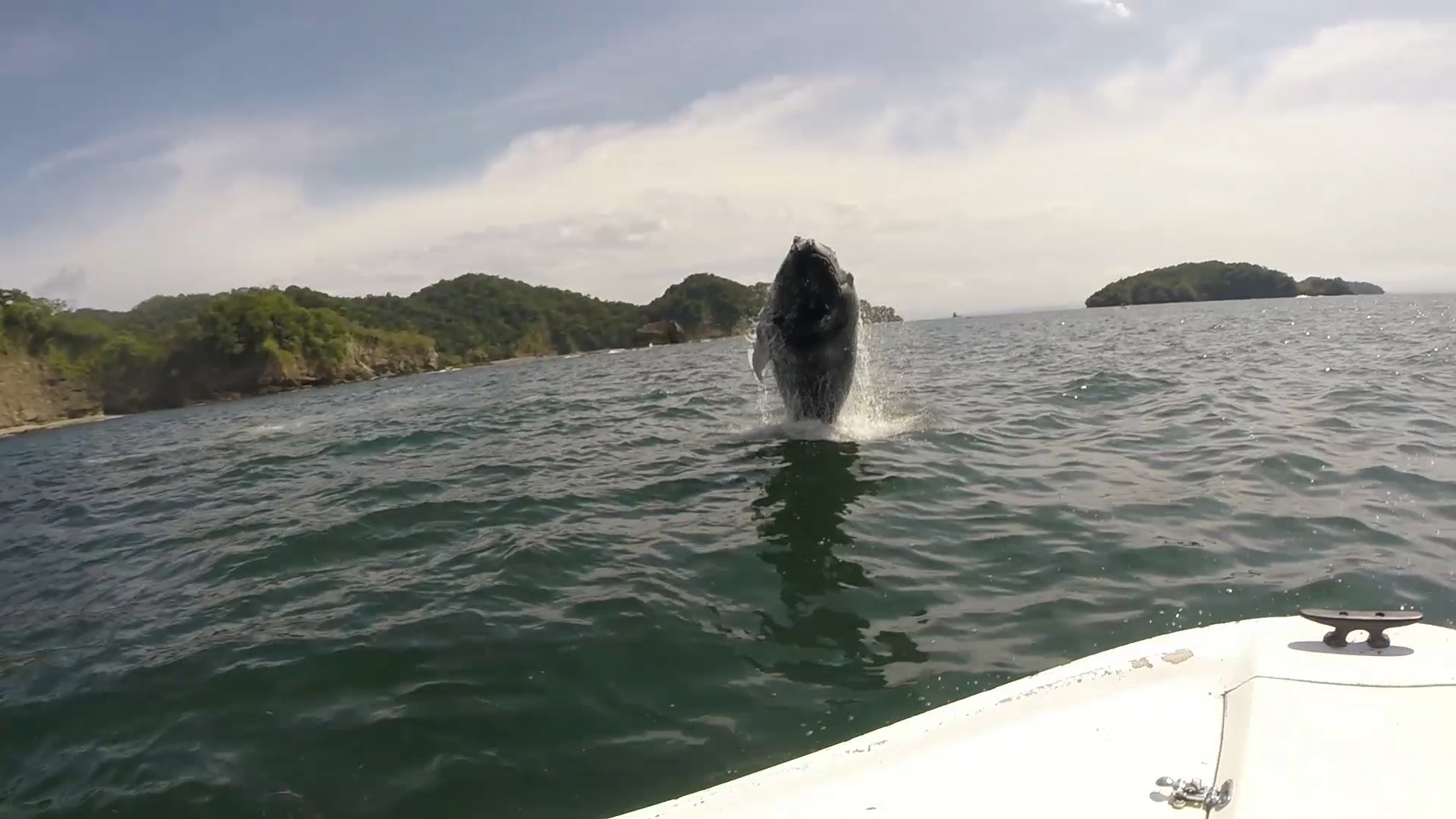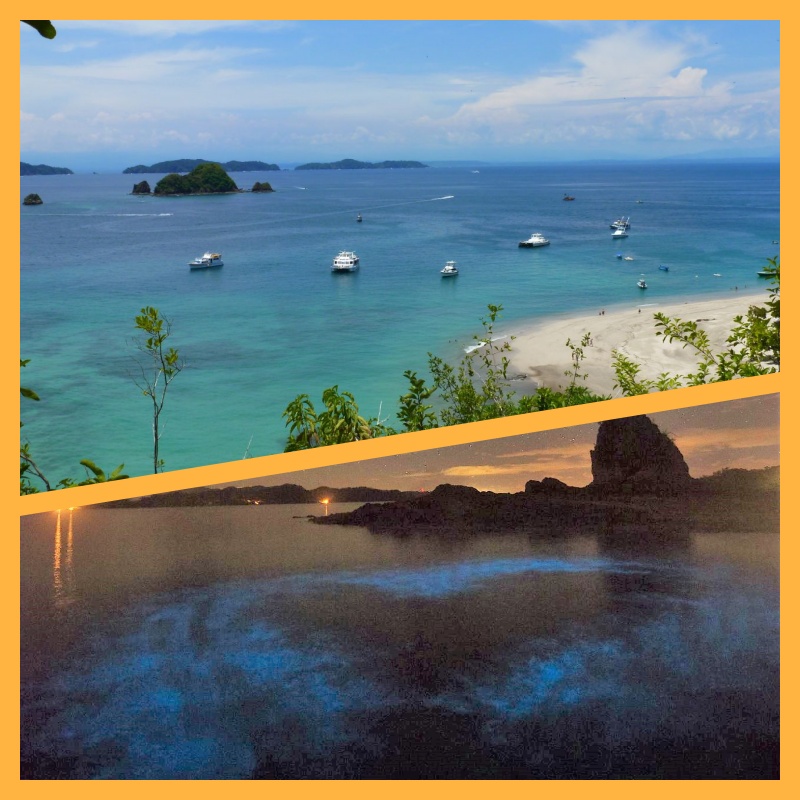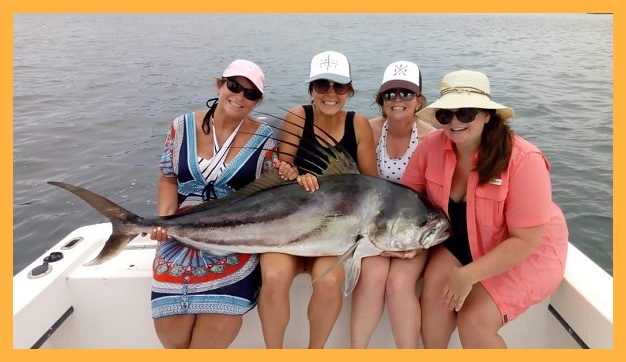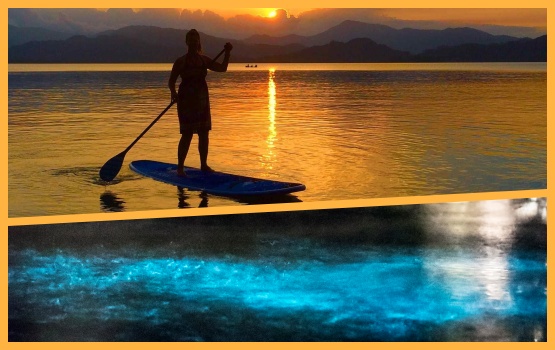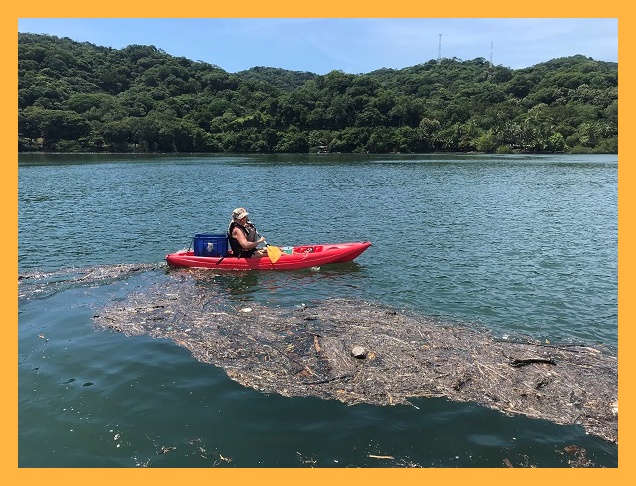Whale and Dolphin Watching
Price ~ valid from 1. november 2024
$79 pp (4 persons minimum) – or $109 pp if it is only two or three of you
Prices above includes taxes 13%
Children 0-3 years: Free of charge
Children: 4-10 years: Half price
Included
As migrating humpback whales from both hemispheres pass by Costa Rica, you have a good chance of seeing whales if you are here in the right season. You are likely to spot the smaller cetaceans throughout the year, but if you want to see the star of the show you should make sure to travel when they’re “wintering” in the warm tropical waters and take our specialized Humpback whale and dolphin watching tour.
Every whale and dolphin watching tour is different and interesting.
There are days that we encounter dolphins close to shore, but no whales, or we just see them from a distance. Other days we get to witness a Humpback whale mom teaching her baby to breach and at times it is possible to get a very close encounter with magnificent dolphins playing in the waves of our boat.
Found all around the world, humpback whales typically migrate up to 25,000 kilometers each year. Humpbacks feed only in summer, in polar waters. When winter comes to their feeding areas, the whales have built their blubber reserves in preparation for the longest migration in the animal kingdom and head to tropical waters like in Costa Rica to breed and give birth. Here in the Gulf of Nicoya we especially see the Humpbacks that come from the Antarctic Ocean from August through December.
Humpbacks make spectacular displays with their fins and tails and are known to jump out of the water on occasion. Have your camera ready!
There are huge resident populations of dolphins up and down Costa Rica’s west coast, making it likely to catch a glimpse of these playful creatures as well. We often come across resident pods of dolphins feeding. The most fun is when playful dolphins discover our boat and come to play in our waves. Suddenly we find ourselves surrounded by these gracious swimmers. They spin around in our bow water, and jump in the wake behind the boat.
Throughout the whale and dolphin watching tour we enjoy the scenic beauty of the coastline, numerous islands and beaches in the Gulf of Nicoya. In addition to the whales and dolphins we often encounter sea turtles, manta rays, eagle rays, ospreys and a lot of other fascinating wild life.
Of course, the whales are wild and there is never any guarantee that you’ll see them, but your captain and guides will be in constant contact by radio with other boats all using gps and knowledge of the recent movements of the animals in the area.
If you care about observing wildlife with maximum enjoyment and minimum interference, this is the best choice for your whale watching tour Costa Rica!
Humpback Whales | The spectacular giants in the Gulf of Nicoya
Costa Rica is a prime whale watching destination and it is all thanks to the spectacular annual migration of two groups of humpback whales. This long journey starts when temperatures in both North and South America start to cool during their respective winters. Humpbacks quickly head toward the equator where waters are warmer—and Costa Rica is one of their favorite spots.
Once the whales get to Costa Rica, it’s not just about vacationing in the sun. Humpbacks congregate together and use the months that they are here to find suitable mates, breed, and rear young. The temperate waters are thought to be ideal for the growth of baby whales, even though they can already be 13-16 feet (4-5 m) long and weigh up to 1 ton (907 kg) at birth.
During migration, humpbacks stay near the surface of the ocean. While feeding and calving, humpbacks prefer shallow waters. During calving, humpbacks are usually found in the warmest waters available at that latitude. Calving grounds are commonly near offshore reef systems, islands, or continental shores.
Humpback feeding grounds are in cold, productive coastal waters.
Did you know?
• Males compete for females by singing songs, making elaborate bubble displays, and physically fending off one another.
• A baby arrives about 11 months after mating and calves stay by their mother’s side for up to a year. They can often be seen touching fins to show affection.
Because they spend so much time above the surface spy hopping, fin slapping, breaching and fluke flipping Humpback whales are by far the most popular subjects for whale watching tours in Costa Rica.
Spy hopping is self-explanatory. The whales are popping above the surface to take a look around.
Scientists believe that the other behaviors may be forms of communication because of the incredible sound produced when whale flesh meets water. Others state confidently that the whales leap clear of the water because they are trying to rid themselves of parasites like sea lice and irritating freeloaders like barnacles.
When you see these giants burst completely free of the water it’s hard to believe it can be the result of anything but sheer exuberance and joy.
More whale facts:
- Newborn Humpback whales double their size in one year
- Every Humpback whale has a unique pattern of pigment and scars on its underside
- Humpback whales are relatively slow swimmers
- These whales can go fast too, and one was recorded by NOAA making a 4,830 km trip in only 36 days!
- Humpback whales spend about 90 % of their time beneath the water’s surface
- A female Humpback has a baby every two to three years
- Humpbacks live around 50 years
- Humpback whales have the longest flippers in the whale world — or the longest arms on the planet. Their flippers can grow to 19 feet long
- Humpback whales migrate farther than any other mammal on Earth
Dolphins | Among the most intelligent creatures on earth
The primary focus of most tourists are the majestic Humpback whales but dolphins are very exciting too. Dolphins are probably the liveliest and most curious creatures of the sea.
There are many species in Costa Rican waters year-round including Spotted Dolphin, Bottlenose Dolphin (Flipper is a bottlenose!), Spinner Dolphin and Common Dolphin. There are a couple of breeding seasons in July through October and December through March.
Did you know?
- Although they look like big fish, dolphins are mammals. They breathe air and have live young and feed them with milk.
- Dolphins are among the most intelligent creatures on earth.
- Dolphins may consume about 8 kg of food a day
- Female dolphins generally begin to breed between 8 to 14 years of age
- The average dolphin swims 10 and 15km per hour. If they are being chased, they are capable of swimming as fast as 40km per hour!
- Dolphins use echoes to locate objects in the water. They send out a series of clicks to find out an objects size, shape, and location.
- Although called killer whales, orcas are not whales, they are the largest dolphin species
- Orcas prey on huge whales like the Humpback whale
- In the wild, most species of dolphins live for at least 25 years.
- Some species, notably the Orca, may reach 60, 70, or even 80 years!
What to expect on the whale and dolphin watching boat tour
This exceptional day starts with pick up at the Paquera ferry landing. Embark on a 8-person power boat and enjoy the smooth ride and views of the island, while the expert crew search for the animals.
Experience the happiness of being up close with these incredible sea mammals! The chances to observe whales and dolphins are high, but not guaranteed every day because they move over big distances so we cannot be sure of the exact place where they are. However, in the Gulf of Nicoya we have a well-established network of local fishermen, tour boats and researchers that instantly report whale and dolphin sightings. This helps locating them on our tours, and it also gives us valuable statistics on the animals that frequent this part of the ocean.
Fruit, snacks and refreshments are available on the boat all day. Our boats are comfortable and have music, safety equipment, and plenty of space and partly sun shade.
Seeing whales and dolphins in the wild is one of the most thrilling sights in nature. These beautiful creatures have inspired adventurers young and old for generations and continue to do so today.
We follow strict guidelines on viewing wildlife in its natural habitat, so you can be sure your experience watching these majestic and playful animals is doing no harm.
After the half day on the water, we bring you back to the Paquera ferry landing. Or if you would like to shower and change clothes we can bring you to Bahia Rica, where we have beach showers and towels available.
Whale and dolphin watching boat tour - Logistics
Practical details:
- Departure from: Bahia Rica Beach (Google map)
- Departure time: 9:00 am
- Duration: Approximately 4 hours
- Capacity: Minimum 2 and maximum 8 persons per boat
- Note! The tour is only available in the whale season from August through November
- Some people experience sea sickness. We have sea sickness pills to offer you, which should be taken 30 minutes before going out at sea. Do tell us in advance if you wish to take one.
Bahia Rica reserves the right to refuse passengers on the boats, if the customer is under the influence of alcohol or drugs or have inappropriate behavior.
Includes:
- Boat tour
- Multi-lingual guide
- Fruit, snacks and drinks
What to bring:
- Sandals or water shoes
- Light breathable clothes
- Sunscreen, sunglasses and cap/hat
- Camera
 Spanish
Spanish
